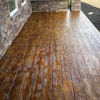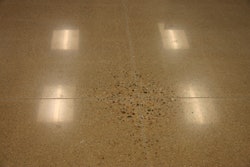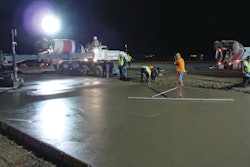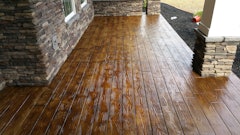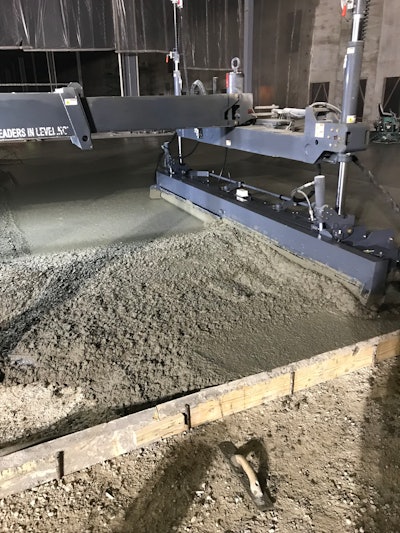
Best Practices can be described as commercial or professional procedures that are accepted or prescribed as being correct or most effective. Identify Best Practices to standardize means and methods based on efficiency, quality and measured results. Lessons Learned and innovation are key components. Strive to learn from your mistakes and constantly be improving. A few bedrock beliefs that you will or will not do placing concrete must be chiseled in stone. Prize innovation and communication within your team and recognize your champions. Lessons Learned and Best Practices constitute the core of your concrete library or data base. There is many options for how you collect, archive and disseminate information. Web pages, printed material and story-telling all have a place.
Measuring Success
Measuring Success and developing standards should be discussed often and changed as required after careful thought. As long as there is core values in place and a positive feedback loop, progress can be measured. Objectives will be different but here is some of the key metrics that should be considered for daily concrete placements.
- Specification compliance including FF/FL. To clarify this means overall compliance to project specifications and details.
- Place/Finish discipline is adherence to Best Practices and elimination of non-conforming means, methods and products. Examples of non conforming issues would be slump and temperature variance, applying water to surface as a finishing aid, improper vibration techniques.
- Rework and repairs should be cataloged and analyzed for root causes.
- Production rate baselines should be established and monitored.
Drive the Schedule by Owning It
In order to get the schedule you want you must do the work and accept the responsibility for meshing the placement schedule into the overall project schedule. This is one way to insure that you are not forced by others to make placements under unfavorable conditions that impact productivity and quality. It is important that at least one key member of your team understands scheduling logic and has a working knowledge of scheduling software. You must insure field input into scheduling via pre-construction reviews and look ahead schedules during construction. Assess the variables that may impact your ability to install slab placements within the allotted time. Site conditions, weather and sequencing of other trades are generally the biggest factors to consider. Weather delay allowed by contract, schedule float and project milestones should be reviewed. Slab installation is usually tied to steel erection, roof completion and machinery/equipment/tracking delivery dates.
Stick to your guns. A year later nobody remembers that we shaved two days off the schedule but everyone remembers the slab that suffered rain damage or the cracking caused by a rutted sub-base. Site conditions are often predicated by who is paying for it. Clarify upfront exactly what the conditions for placing concrete will be and who the responsible parties are.
Planning and Communication is What Makes Things Click
Planning without communication does nothing to enlighten and communication without planning is chaotic. Planning is plotting the path forward and communication shines the light. Try to make processes as transparent as possible, easier to disseminate.
The degree of planning will obviously be dictated by size of project and scope of work. Some basic planning required for a concrete placement is;
- Placement size and configuration.
- Means and methods to be utilized.
- Manpower and equipment required.
- Concrete service rates and timing.
- Contingencies and fall back options.
There is an old military saying “Two is one and one is none” that is very applicable to construction activities. The gist of the idea is that you should have multiple methods to accomplish certain goals and tasks. Develop alternate plans based on known variables such as weather and site conditions, breakdowns and delays. Mix design review, test placements, mock-ups are all key factors in the planning process. Placement lay-outs and work flow schedules often times must be established prior to a majority of the field personnel being assigned. It is critical that team members be brought up to speed as they are brought on. I have found that a very basic placement plan communicated daily helps get everyone on the same page.
To communicate effectively requires interaction between parties. One half of the equation is listening. Concrete people come from diverse backgrounds and can be strong willed and opinionated, so leave the ego at home. Communicate with respect, promptness and be concise. One way communications works fine for posting information and results.
Feedback is what completes the information loop and it is important to gather data from as many different sources as possible external as well as internal. Testing lab, Ready Mix QC personnel and third party inspectors are excellent sources of hard data regarding the placement that is often under utilized. Getting quality data back from the field requires asking the right questions and identifying what is pertinent. Relaying information back to the team as quickly as possible for review and action is critical. Daily reports, slab inspections, post reviews and worker feedback are all excellent sources to be utilized.
“How much ignorance can you tolerate within your organization”
Training and education of your personnel is a force multiplier allowing you to get more done with the same effort. When initiating a program focus more on training than education, bring everyone up to established standards. ACI certifications, equipment and product certification and software training are all good examples of first steps. Education is ongoing and should be tailored to team objectives and individual aptitude and should be wide ranging.
Resources for training and education need not be expensive. Mentoring and cross training can be accomplished in house and many vendors and suppliers offer training at minimal or no cost. Crew enhancement training can be either general or project specific and is a great way to hone your Best Practices and stay up to date. Trade associations offer seminars and work shops often times at discounted prices.
Talking with the other contractors can be okay. You need to stay abreast of how the rest of the world is doing things. Trade conventions and seminars are great meeting places and forums to discuss issues relevant to the entire industry.
The biggest roadblocks to a successful training and education program are cultural. I am a firm believer that nothing remains static in the construction industry and you are either moving forward or backward. Continuing education and advanced training will insure your team is moving in the right direction. Technology is rapidly changing how we place and finish concrete slabs and you will either keep up or be left behind.

